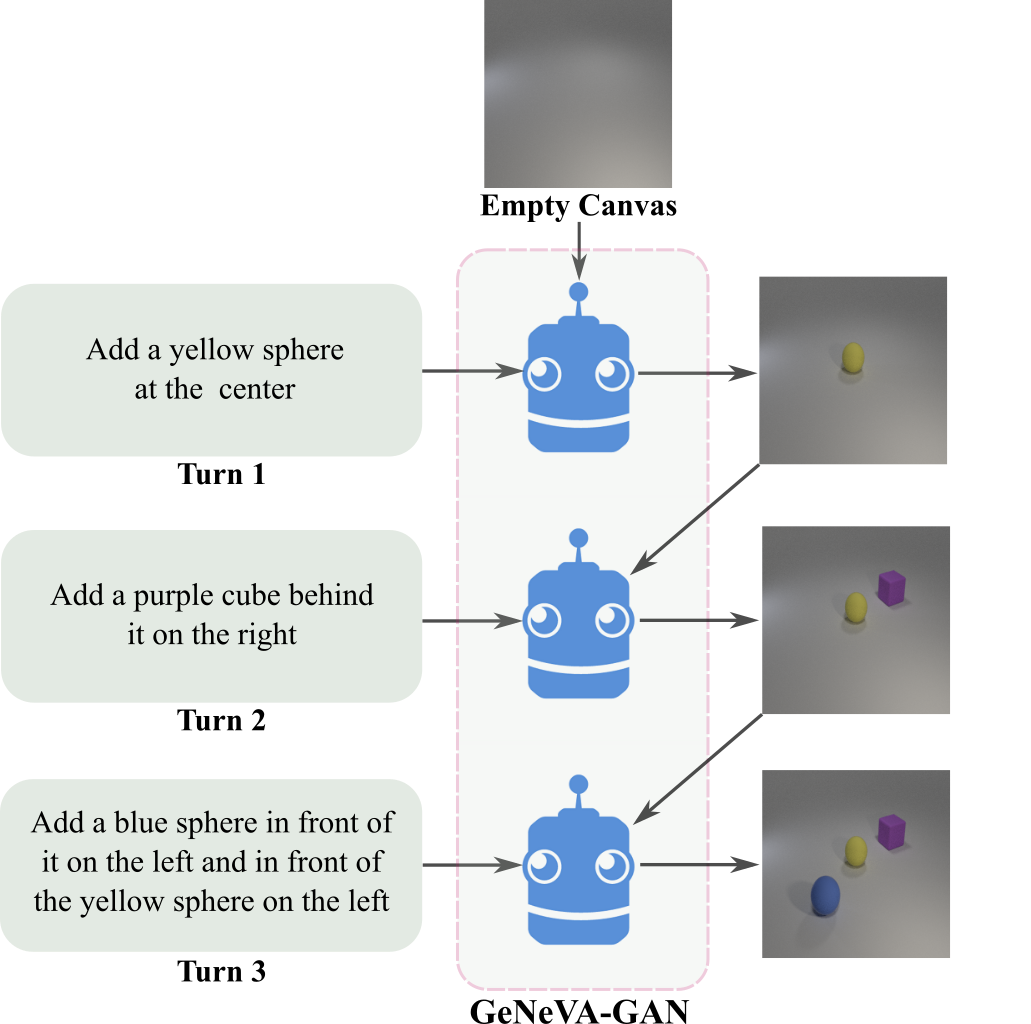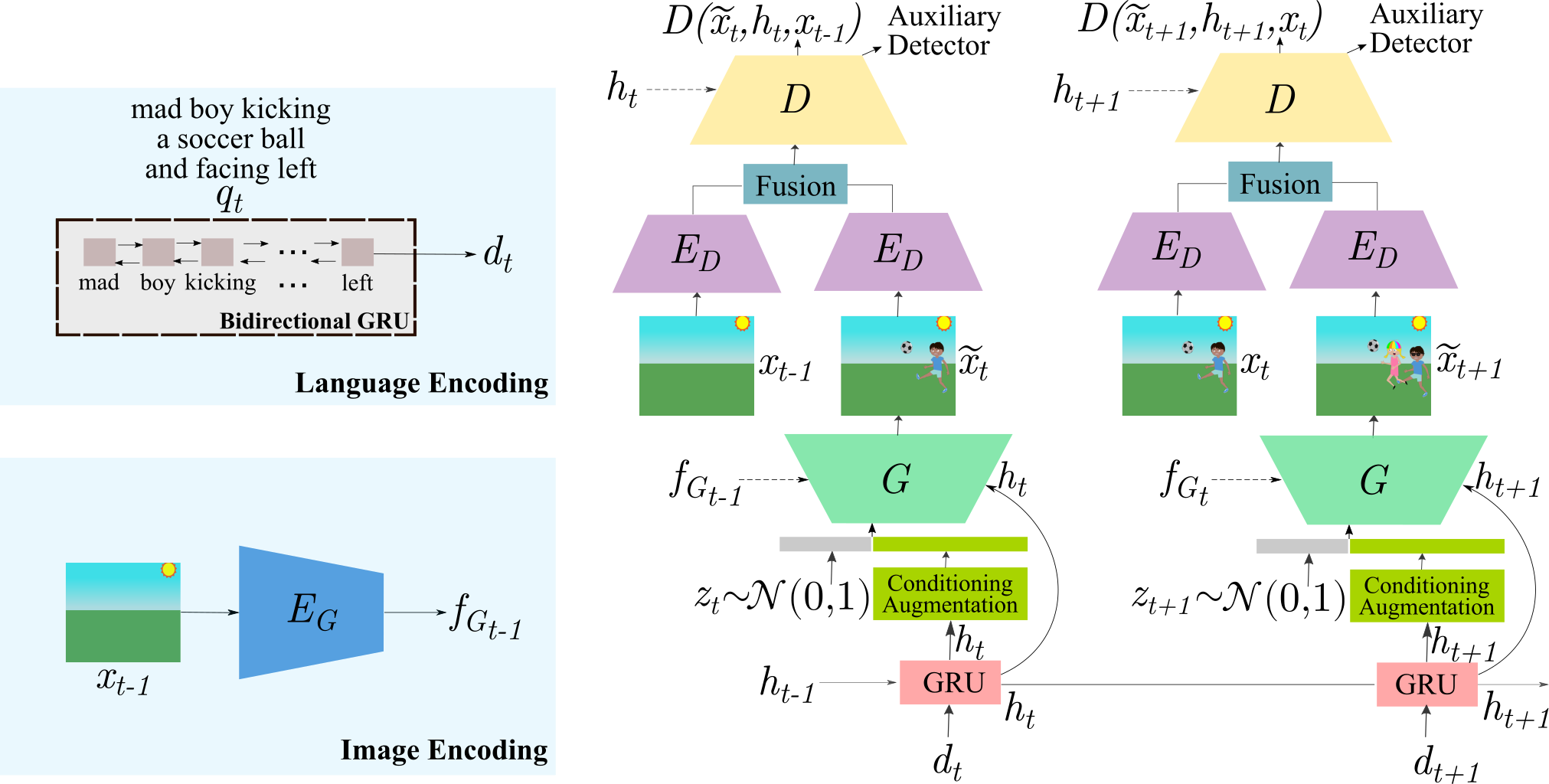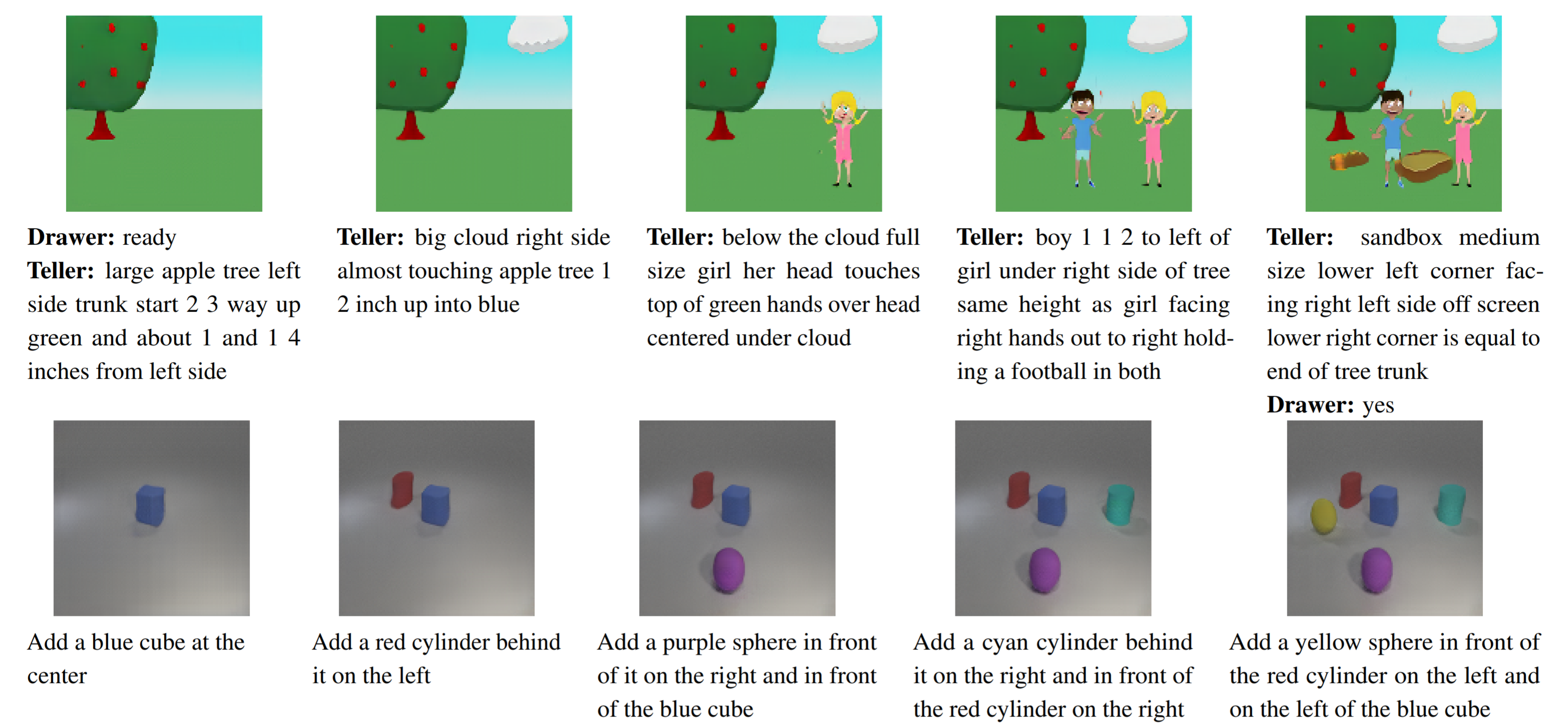Maluuba / Geneva
Programming Languages
Projects that are alternatives of or similar to Geneva
Generative Neural Visual Artist (GeNeVA): GeNeVA-GAN Training Code
Code to train and evaluate the GeNeVA-GAN model for the GeNeVA task proposed in our ICCV 2019 paper Tell, Draw, and Repeat: Generating and Modifying Images Based on Continual Linguistic Instruction.
 |
 |
|---|---|
| GeNeVA Task | GeNeVA-GAN |
 |
|---|
| Example images generated by GeNeVA-GAN on CoDraw (top row) and i-CLEVR (bottom row); shown with the provided instructions |
Setup
All the models in the paper were trained and tested on 2 NVIDIA P100 GPUs.
1. Generate data folder for CoDraw and i-CLEVR datasets
See GeNeVA - Datasets - Generation Code
2. Install Miniconda
wget https://repo.continuum.io/miniconda/Miniconda3-latest-Linux-x86_64.sh
bash Miniconda3-latest-Linux-x86_64.sh
rm Miniconda3-latest-Linux-x86_64.sh
3. Create a conda environment for this repository
conda env create -f environment.yml
4. Activate the environment
source activate geneva # or `conda activate geneva` for newer conda installs
5. Run setup
python setup.py install
6. Run visdom
visdom
Training progress for all the experiments can be tracked in visdom which by default starts at http://localhost:8097/.
Training the object detector and localizer
python scripts/train_object_detector_localizer.py --num-classes=24 --train-hdf5=../GeNeVA_datasets/data/iCLEVR/clevr_obj_train.h5 --valid-hdf5=../GeNeVA_datasets/data/iCLEVR/clevr_obj_val.h5 --cuda-enabled # for i-CLEVR
python scripts/train_object_detector_localizer.py --num-classes=58 --train-hdf5=../GeNeVA_datasets/data/CoDraw/codraw_obj_train.h5 --valid-hdf5=../GeNeVA_datasets/data/CoDraw/codraw_obj_val.h5 --cuda-enabled # for CoDraw
Note: The above commands also have several options, which can be found in the python script, that need to be set. Batch size (--batch-size) is not per-GPU but combined across GPUs.
This trains the object detector and localizer model used for evaluating GeNeVA-GAN on Precision, Recall, F1-Score, and rsim metrics. For comparison with results in our paper, you should skip training the model yourself and download the pre-trained models (iclevr_inception_best_checkpoint.pth and codraw_inception_best_checkpoint.pth) from the GeNeVA Project Page.
Training on CoDraw
Modify geneva/config.yml and example_args/codraw-d-subtract.args if needed and run:
python geneva/inference/train.py @example_args/codraw-d-subtract.args
Training on i-CLEVR
Modify geneva/config.yml and example_args/iclevr-d-subtract.args if needed and run:
python geneva/inference/train.py @example_args/iclevr-d-subtract.args
Evaluating a trained model on CoDraw test set
You will have to add the line --load_snapshot=</path/to/trained/model> to example_args/codraw-d-subtract.args to specify the checkpoint to load from and then run:
python geneva/inference/test.py @example_args/codraw-d-subtract.args
Evaluating a trained model on i-CLEVR test set
You will have to add the line --load_snapshot=</path/to/trained/model> to example_args/iclevr-d-subtract.args to specify the checkpoint to load from and then run:
python geneva/inference/test.py @example_args/iclevr-d-subtract.args
Reference
If you use this code or the GeNeVA datasets as part of any published research, please cite the following paper:
Alaaeldin El-Nouby, Shikhar Sharma, Hannes Schulz, Devon Hjelm, Layla El Asri, Samira Ebrahimi Kahou, Yoshua Bengio, and Graham W. Taylor. "Tell, Draw, and Repeat: Generating and Modifying Images Based on Continual Linguistic Instruction". Proceedings of the IEEE International Conference on Computer Vision (ICCV). 2019.
@InProceedings{El-Nouby_2019_ICCV,
author = {El{-}Nouby, Alaaeldin and Sharma, Shikhar and Schulz, Hannes and Hjelm, Devon and El Asri, Layla and Ebrahimi Kahou, Samira and Bengio, Yoshua and Taylor, Graham W.},
title = {Tell, Draw, and Repeat: Generating and Modifying Images Based on Continual Linguistic Instruction},
booktitle = {The IEEE International Conference on Computer Vision (ICCV)},
month = {Oct},
year = {2019}
}
Microsoft Open Source Code of Conduct
This project welcomes contributions and suggestions. Most contributions require you to agree to a Contributor License Agreement (CLA) declaring that you have the right to, and actually do, grant us the rights to use your contribution. For details, visit https://cla.microsoft.com.
When you submit a pull request, a CLA-bot will automatically determine whether you need to provide a CLA and decorate the PR appropriately (e.g., label, comment). Simply follow the instructions provided by the bot. You will only need to do this once across all repositories using our CLA.
This project has adopted the Microsoft Open Source Code of Conduct. For more information see the Code of Conduct FAQ or contact [email protected] with any additional questions or comments.
License
See LICENSE.txt. For Third Party Notices, see NOTICE.txt.
